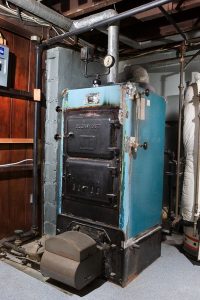Yes, this is Louisiana, and for much of the year, our weather is hot and steamy. We don’t need our heating systems up and running from September through May like they might in the northern reaches of the US. But we do need them! Average low temperatures in January are in the upper 30s, which means it often gets significantly colder than that. It’s not just a matter of comfort, it’s a matter of safety, and not having frozen pipes burst in the night! A well-functioning HVAC unit is essential for keeping your home comfortable year round, providing both heating in winter and cool air in summer. Furnaces are the most common home heating option in the US, making them a reliable choice for many households.
We simply can’t do without reliable heat. Modern heating and cooling systems, including your air conditioning system, are designed to keep your home cool during hot Louisiana summers and warm during chilly nights. When a furnace is getting on in years, needs a costly furnace repair, or doesn’t ever seem to work as effectively or efficiently as it used to, it needs to be replaced. Professional installation is crucial for ensuring the efficiency and safety of your new furnace, and many contractors offer financing options to help make the investment more affordable. A unit that is too small will run constantly, while one that is too large will short cycle, leading to inefficiency and uneven heating. Do you need a new furnace installed? Or is the old one still worth repairing? Let’s take a closer look and figure it out.
Signs of a Failing Furnace
When your heating system starts to falter, it can quickly turn from a minor inconvenience into a major headache—especially during those chilly Louisiana nights. Recognizing the early warning signs of a failing furnace can help you avoid costly repairs, keep your energy bills in check, and ensure your home stays comfortable year-round. Here are some key indicators that your furnace or HVAC system may be on its last legs:
Uneven Heating: If you notice that some rooms in your house are toasty while others remain stubbornly cold, your furnace may be struggling to distribute heat evenly. Uneven heating can point to issues with your heating system, aging ductwork, or even poor insulation, all of which can put extra strain on your unit.
Rising Energy Bills: Have your energy bills crept up, even though your usage habits haven’t changed? A spike in heating costs often signals that your furnace is losing efficiency. Problems like a worn-out heat exchanger, clogged filters, or a malfunctioning thermostat can force your system to work overtime, driving up utility bills.
Frequent Repairs: If you find yourself calling for furnace repair more often than you’d like, it’s a sign that your system is wearing out. Frequent repairs not only add up in cost, but they also indicate that your furnace may be nearing the end of its useful life. At a certain point, investing in a new furnace replacement, or even upgrading to a heat pump maybe the best bet for your comfort and your wallet.
Strange or Unusual Noises: Banging, clanking, whistling, or other strange noises coming from your furnace are never a good sign. These sounds can be caused by anything from a loose blower motor to a cracked heat exchanger. Ignoring these noises can lead to more costly furnace repair down the road—or even a complete system breakdown.
Gas Leaks and Carbon Monoxide: Safety should always come first. If you ever suspect a gas leak, or if your carbon monoxide detector goes off, evacuate your home immediately and contact a professional. Natural gas leaks and carbon monoxide are serious hazards that require immediate attention from a qualified HVAC contractor.
Age of the Furnace: Most furnaces are designed to last between 15 and 20 years. If your unit is approaching or has surpassed this range, it’s time to start thinking about furnace replacement. Newer models are not only more energy efficient, but they also come with advanced safety features and can help lower your heating bills.
Increased Labor Costs: As furnaces age, the cost of repairs and maintenance tends to rise. If you’re noticing higher labor costs every time you call for service, it may be more cost-effective to invest in a new furnace rather than continuing to repair an old, inefficient unit.
Outdated Technology: Older furnaces often lack the efficiency and performance of today’s energy efficient systems. Upgrading to a modern HVAC unit or heat pump can provide better heating, lower energy bills, and improved indoor air quality.
Inadequate Insulation: If your home isn’t properly insulated, your furnace has to work harder to keep things warm. This not only shortens the life of your heating system but also leads to higher energy bills. Ensuring your insulation and ductwork are up to par can help your furnace run more efficiently.
By keeping an eye out for these warning signs, you can take action before a minor issue turns into a major problem. If you’re experiencing any of these symptoms with your current system, it’s wise to consult with a trusted HVAC professional. They can help you determine whether furnace repair or replacement is the right move, and guide you toward the most energy efficient and cost-effective solution for your home. High-efficiency systems typically have higher upfront costs but can lead to significant savings on utility bills over time, making them a worthwhile investment for long-term comfort and efficiency.
When should you repair vs. replace your gas furnace?
- Furnace age matters: Electric models may last up to 20 years, but gas furnaces typically last around 15, repair becomes less worthwhile near the end of their lifespan.
- Maintenance legacy: Routine maintenance and regular furnace maintenance are essential for sustaining both efficiency and effectiveness. Skipping routine maintenance can lead to higher repair costs and a shorter furnace lifespan.
- Rising energy bills: If utility costs climb despite ongoing service, declining efficiency is likely, indicating potential need for furnace replacement.
- Persistent performance issues: When heating remains unreliable or weak after repairs, it often signals that the unit is nearing retirement.
- Repair Frequency: If you find yourself scheduling frequent repairs, especially for an older natural gas furnace, it may be time to consider replacement. As repair costs increase, it may become more economical to consider replacement, especially especially if you’re comparing total furnace cost and energy savings.
- Type: The type of furnace matters—natural gas furnaces are a common choice for efficient heating, but oil furnaces and propane-fueled systems are also options, each with their own cost and efficiency considerations. Some heating systems use electricity as a primary or backup energy source.
- Cost Consideration: The average cost to replace a furnace is approximately $4,771, with a typical range between $2,825 and $6,846, depending on the type and installation requirements.
Furnace Factors to Consider
A heating system is complex, with a lot of components. Many things can go wrong. Many things need to be going right for the whole thing to work properly. So there’s no single, straightforward answer to when it needs to be replaced. There is no single factor that determines when to replace a furnace—other factors such as climate, home usage, and maintenance history should also be considered. Instead, there are a variety of things you should include in your thought process. A professional contractor should perform a heat load calculation to determine the correct size for your heating system, ensuring it operates efficiently and meets your home’s specific needs.
- Type: Electric furnaces last significantly longer than gas furnaces.
- Age: While an electric furnace will often last 20 years, you shouldn’t expect more than 15 from a gas furnace.
- Condition: These life expectancies can only be reached with regular maintenance. Receiving service only occasionally will shorten the life of the furnace. No maintenance at all can result in a furnace lifetime only half as long as it should be.
- Efficiency: As long as maintenance is performed annually, the furnace’s efficiency should stay steady for many years. If your utility bills are climbing despite maintenance, the furnace may be on its way out.
- Effectiveness: Likewise, maintenance will keep a furnace performing reliably. Ineffective heating despite maintenance or repairs is a sign that the furnace is getting ready to retire.
- Repair Frequency: As your furnace ages, it experiences more and more wear and tear. Small components may need to be replaced, or things may require repair, more and more often. When these warning signs of needed heating system repairs become frequent, it’s a good indicator that your furnace is nearing the end of its reliable service life.
- Repair Cost: If your furnace requires repair right now, how expensive do you expect that repair to be? Many homeowners use the 50% or $5,000 rule for furnace replacement as a guide, helping them decide if the cost of fixing the unit makes sense compared to putting that money toward a new system. The total investment includes not just the cost of repairs, but also the cost of new equipment and professional installation.
Consulting with experienced contractors gives you access to expert advice and the latest equipment options, ensuring you make an informed decision when installing or replacing your heating system.
Weighing the Factors
A furnace that is under ten years old and well-maintained is unlikely to experience inefficiency and ineffectiveness that can’t be repaired. Regular efforts to maintain your furnace can delay the time to replace it, but eventually replacing the unit becomes the best option when performance declines. It’s more likely to be worth fixing, because that repair could ensure several more winters of heating.
Recognizing the right time to replace your furnace is crucial for maintaining comfort and efficiency. A furnace that is reaching the outer limits of those life expectancies, or has been poorly maintained and is already struggling with efficiency and performance issues, might not be worth investing in. No amount of money or service will make your old furnace new again, and some problems, like a damaged heat exchanger, cannot be safely repaired on your own.
Whether you need maintenance, repair, or heater replacement in Bossier City, LA, we’ve got you covered.
Contact us today to discuss your new heating system options or any other HVAC needs.










